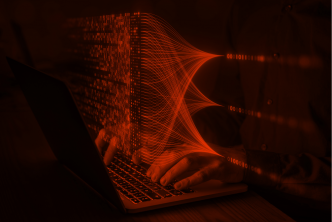Leveraging Generative AI to Revolutionize E2B Field Extraction
Will the use of gen AI to automate E2B field extraction from unstructured documents usher in a new age of drug safety reporting?
The intersection of pharmacovigilance and artificial intelligence is ushering in a new era of efficiency and accuracy. One of the most exciting advancements is the use of generative AI (gen AI) to automate E2B field extraction from unstructured documents. E2B is an international standard for transmitting medicine adverse event reports. This move would fundamentally change how we approach drug safety reporting.
The Significance of E2B in Pharmacovigilance
E2B is more than just a standardized template in pharmacovigilance—it serves as the foundation for structured, high-quality safety reporting. It ensures that critical information like patient demographics, drug usage, and adverse events are captured in a clear, consistent format. Traditionally, extracting these fields from unstructured sources—such as medical reports or free-text case submissions—has been a manual, time-consuming process prone to inconsistencies.
Generative AI is transforming this landscape. By leveraging large language models (LLMs), the process of field extraction can be automated, significantly improving both efficiency and accuracy. The potential to enhance the speed and reliability of drug safety reporting is enormous.
Generative AI is transforming this landscape. By leveraging large language models, the process of field extraction can be automated, significantly improving both efficiency and accuracy.
How Large Language Models Are Transforming E2B Extraction
Large language models are advanced AI systems trained on massive datasets, enabling them to process and understand human language at a level that wasn’t possible until recently. In the context of pharmacovigilance, these models can sift through vast amounts of unstructured text—clinical narratives, patient records, or case reports—and autonomously extract the key fields required for E2B.
These models are designed to understand the specific context and language used in medical and pharmaceutical settings. When fine-tuned for pharmacovigilance tasks, they can extract E2B fields with impressive precision, minimizing the need for manual data entry. This shift allows human teams to focus on higher-level analysis and decision-making, rather than spending time on repetitive tasks.

The Importance of Effective AI Prompts
While AI systems are powerful, their performance depends heavily on the instructions—or prompts—they are given. A well-crafted prompt can make all the difference when extracting E2B fields. For instance, providing clear instructions like: “extract the patient’s age, gender, and primary diagnosis from the following medical report. Using the format: {Age=#, Gender=#, Diagnosis=[###]}” ensures that the AI delivers structured and accurate results.
On the other hand, vague or incomplete prompts can lead to errors or irrelevant output. For AI to truly optimize E2B extraction, experts must continually refine and test these prompts to ensure consistent, high-quality results that meet regulatory standards.
From Text to Structured Data: The E2B Pipeline
The process of extracting E2B fields using Generative AI can be broken down into several stages:
- Document Intake: Unstructured documents such as medical reports are imported into an AI pipeline.
- LLM Text Processing: The AI reads the document and identifies relevant sections.
- Prompt-Based Extraction: Using tailored prompts, the AI extracts the necessary E2B fields like patient demographics and drug information.
- Structured Output: The extracted data is then formatted into a standardized structure, such as XML, which can be used for regulatory reporting or safety databases.
This streamlined process not only saves time but also ensures data consistency and compliance with industry standards.
The Role of Human Expertise: A Hybrid Approach
Despite the powerful capabilities of AI, it’s important to acknowledge its limitations. In some instances, AI may misinterpret context or extract incomplete data, which is why a Human-in-the-Loop (HITL) approach is essential. Human oversight helps validate the AI's outputs, corrects errors, and ensures compliance with regulatory and clinical standards.
This hybrid model, where AI handles the repetitive tasks while human experts provide oversight, ensures both efficiency and accuracy. As regulatory guidelines evolve, human input will continue to be critical in refining AI models and keeping them aligned with the latest standards and local regulatory requirements.
The Future of Drug Safety: A Partnership Between AI and Humans
As Generative AI continues to advance, its role in pharmacovigilance will only grow. By combining AI-driven automation with human expertise, we can dramatically improve both the speed and precision of E2B extraction and safety reporting. While the role of human oversight may decrease as AI becomes more reliable, it will always remain a critical element in maintaining the quality and accuracy of drug safety processes.
The future of pharmacovigilance is bright, and AI will play a pivotal role in that transformation. From improving data quality to speeding up regulatory reporting, AI is set to revolutionize the field, allowing us to deliver safer and more effective treatments to patients faster than ever before.
Ready to transform your pharmacovigilance workflow? Contact us today to learn how we can help you implement AI-driven solutions that align with your specific needs and regulatory standards.
Disclaimer
This document is intended for informational purposes only. It does not constitute legal, regulatory or clinical advice. Users are advised to consult their own experts and ensure compliance with local laws and standards when implementing AI in pharmacovigilance.
Contributors
Jonathon Romero | Principal Safety & PV Operations Specialist
Asad Rashid | VP, Safety and Pharmacovigilance






